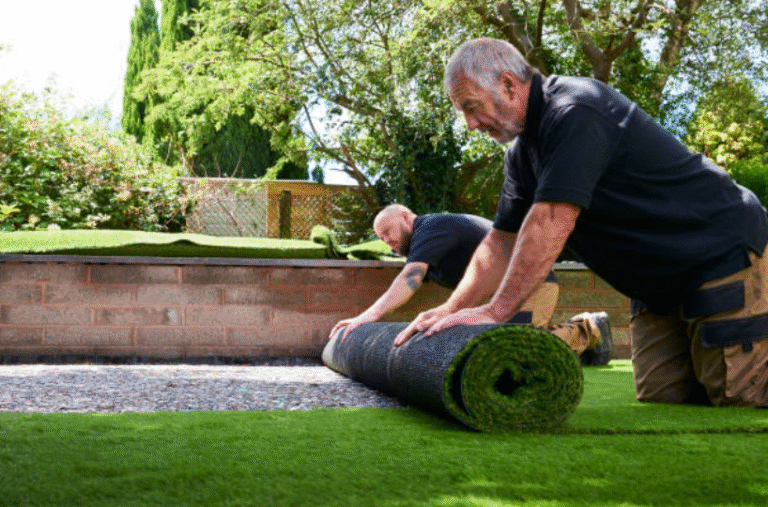Essential Tools Every DIY Home Improvement Enthusiast Should Have
Home improvement projects can be a fulfilling way to improve your living space, save money, and personalize your home. Whether you’re planning small repairs or larger renovations, having the right tools is essential for getting the job done efficiently and safely. For any DIY enthusiast, building a well-stocked toolkit will ensure that you are prepared for a wide range of projects, from simple fixes to more complex transformations.
In this article, we’ll take you through the essential tools every DIY home improvement enthusiast should have in their toolkit. Whether you’re a novice or a seasoned pro, these tools will make your DIY projects easier, safer, and more successful.
1. Introduction to DIY Home Improvement
Home improvement allows you to enhance your living environment and can be a rewarding hobby. However, before embarking on any DIY journey, it’s important to have the proper tools. Using the right tools not only makes the job easier but also ensures a professional-looking finish. In this article, we’ll cover all the must-have tools that will help you with a variety of DIY home improvement projects.
2. The Importance of Having the Right Tools
Choosing the right tools can be the difference between a successful project and a frustrating experience. Here’s why:
- Precision and Quality: The right tools help you execute tasks with precision, leading to cleaner cuts, smoother finishes, and better results.
- Safety: Proper tools ensure safety during use, reducing the risk of accidents.
- Efficiency: Good-quality tools help you complete your work faster and with less effort.
- Cost-Effectiveness: Investing in quality tools can save you money in the long run by reducing the need for professional services.
3. Essential Hand Tools for Every DIYer
Hand tools are fundamental in any DIY toolkit. These tools help you perform a variety of tasks, from measuring to hammering, cutting, and adjusting. Here’s a list of essential hand tools every DIY enthusiast should have:
3.1. Hammer
A hammer is one of the most basic yet essential tools in any home improvement toolkit. It is used for driving nails, breaking objects, and more. A claw hammer with a comfortable grip is a versatile option.
3.2. Screwdrivers
Screwdrivers come in various shapes and sizes, with flathead and Phillips-head being the most common. These tools are necessary for driving screws into surfaces, assembling furniture, and more.
3.3. Tape Measure
Accuracy is crucial in DIY projects, and a tape measure allows you to take precise measurements. Look for a 25-foot retractable tape measure for versatility in different projects.
3.4. Utility Knife
A sharp utility knife is ideal for cutting materials like drywall, cardboard, carpeting, and more. It’s a handy tool for quick, precise cuts in various materials.
3.5. Level
A level ensures that your work is straight and even. It is especially important for hanging shelves, pictures, and installing cabinets. A 24-inch or 48-inch spirit level will provide the most accuracy for home improvement tasks.
See also: Stmoro – Your Ultimate Guide to Stmoro App and Features
4. Power Tools for Heavy-Duty Projects
When tackling more complex DIY tasks, power tools can greatly improve both efficiency and performance. Power tools are often used for tasks like cutting, drilling, sanding, and driving screws. Here are the essential power tools every DIY enthusiast should consider:
4.1. Cordless Drill
A cordless drill is one of the most versatile tools you’ll ever own. It allows you to drill holes, drive screws, and even perform some light sanding. With the right attachments, a cordless drill can handle a wide range of projects, from installing light fixtures to assembling furniture.
4.2. Circular Saw
A circular saw is a powerful tool used to make straight cuts in wood, metal, or plastic. It’s perfect for larger home improvement projects like building a deck or cutting plywood sheets. With a sharp blade, this tool offers speed and precision.
4.3. Jigsaw
A jigsaw is ideal for making curved cuts in wood, metal, or plastic. If you’re working on intricate cuts for cabinets, trim, or DIY furniture, a jigsaw is a must-have power tool in your arsenal.
4.4. Oscillating Multi-Tool
An oscillating multi-tool can perform a variety of tasks such as sanding, scraping, cutting, and grinding. It’s perfect for getting into tight spaces and making precise cuts, which makes it an essential tool for home improvement enthusiasts.
4.5. Sander
A sander helps you achieve smooth finishes on wood, metal, and other surfaces. Whether you’re refinishing furniture, preparing walls for painting, or working on floors, an electric sander can save you a lot of time and effort.
5. Safety Gear for DIY Projects
Safety should always be a priority when working on home improvement projects. The right safety gear can prevent injuries and help you stay protected while using power tools. Here are some safety essentials you shouldn’t overlook:
5.1. Safety Glasses
Protect your eyes from flying debris, dust, and other hazards by wearing safety glasses while working with power tools.
5.2. Hearing Protection
Loud tools like drills, saws, and sanders can damage your hearing over time. Using earplugs or earmuffs can help reduce noise exposure during noisy tasks.
5.3. Work Gloves
Work gloves protect your hands from splinters, sharp edges, and abrasions. Look for gloves that offer both comfort and durability for a better grip and protection.
5.4. Dust Mask
When sanding or working with materials that generate fine dust, a dust mask can help you avoid inhaling harmful particles.
5.5. Knee Pads
Knee pads provide comfort and protection when working on projects that require kneeling, such as flooring installation or tiling.
6. Must-Have Storage Solutions for Your Tools
Keeping your tools organized will save you time and effort. Proper storage solutions help protect your tools from damage and make them easier to access when needed. Consider the following options:
6.1. Tool Chest
A tool chest provides organized storage for hand tools and power tools, keeping them in one place and making them easy to access.
6.2. Tool Belt
A tool belt is a great option for holding smaller tools when working on a project, ensuring you have everything you need without running back and forth to the storage area.
6.3. Pegboard
A pegboard mounted on the wall allows you to hang tools for easy visibility and access, making it easier to find what you need when you need it.
7. Additional Tools for Specialized Projects
In addition to the basic tools, there are other specialized tools that might come in handy depending on the nature of your DIY project. Some of these tools include:
7.1. Pipe Wrench
A pipe wrench is used for plumbing projects, especially when working with pipes that need to be tightened or loosened.
7.2. Plunge Router
A plunge router is used for creating decorative edges, hollowing out wood, and other woodworking tasks. It’s an excellent tool for detailed projects like cabinetry.
7.3. Laser Level
A laser level offers higher precision for leveling and alignment compared to traditional bubble levels. It’s perfect for hanging shelves, installing cabinets, or any project requiring perfect alignment.
8. Maintenance and Care for Your Tools
To ensure the longevity and performance of your tools, it’s important to maintain them regularly. Here are some tips:
- Clean Tools After Use: Wipe down tools to remove dirt, dust, and rust.
- Sharpen Blades: Keep blades and cutting edges sharp to ensure smooth performance.
- Store Tools Properly: Store tools in a dry area to prevent rust and damage.
- Check Batteries: If using battery-powered tools, make sure the batteries are charged and stored properly.
9. Conclusion: Building the Perfect DIY Toolkit
Equipped with the right tools, your DIY home improvement projects can be both enjoyable and successful. Whether you’re tackling minor repairs or major renovations, the tools listed in this article are essential for any DIY enthusiast. By investing in these key tools, maintaining them properly, and following safety protocols, you can achieve professional results on your own.
Frequently Asked Questions
1. What are the most essential tools for a beginner DIY enthusiast?
For beginners, the most essential tools include a hammer, screwdriver set, tape measure, utility knife, and a level. These tools will cover the basics for most home improvement tasks.
2. Can I use a cordless drill for all my projects?
Yes, a cordless drill is versatile and can be used for drilling holes, driving screws, and even light sanding or cutting with the right attachments.
3. Do I need a sander for DIY home improvement projects?
If you’re working with wood, metal, or preparing surfaces for painting, a sander can save a lot of time and effort in achieving smooth finishes.
4. What should I look for when choosing a hammer?
Look for a hammer that has a comfortable grip, a balanced weight, and a durable head. A claw hammer is the most versatile option for home improvement tasks.
5. Are power tools worth the investment for DIY enthusiasts?
Yes, power tools can greatly improve efficiency and precision, especially for more complex tasks. They are worth the investment if you plan on doing a variety of home improvement projects.
6. How can I organize my tools effectively?
Using tool chests, pegboards, and tool belts can help keep your tools organized and easily accessible, reducing the time spent searching for the right tool
Equipped with the right tools and knowledge, you can take on any DIY project with confidence. By investing in essential hand tools, power tools, safety gear, and storage solutions, your home improvement journey will be smoother, more enjoyable, and more successful.





